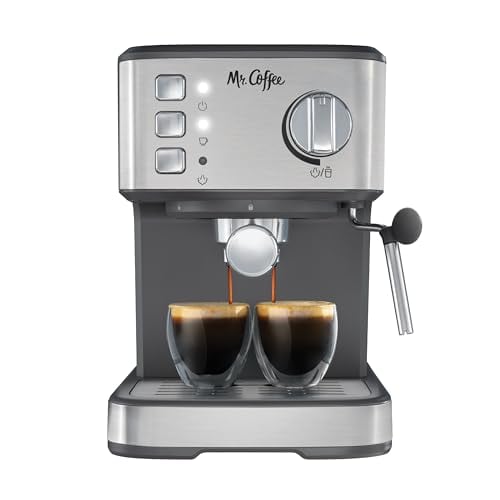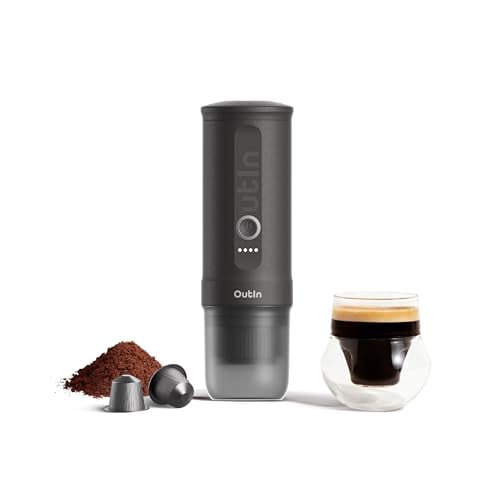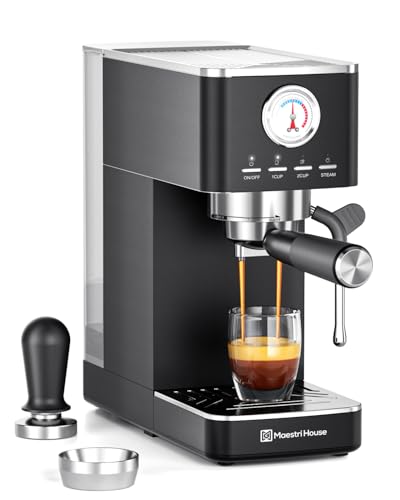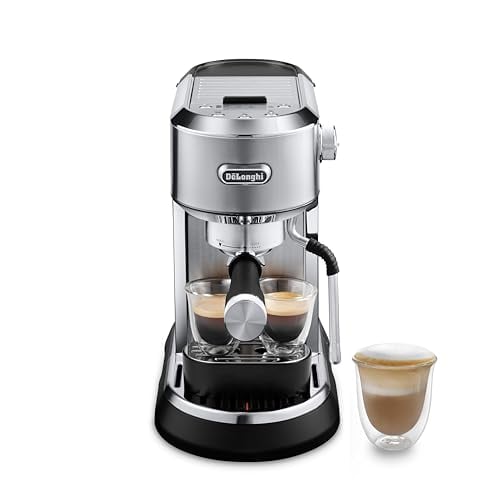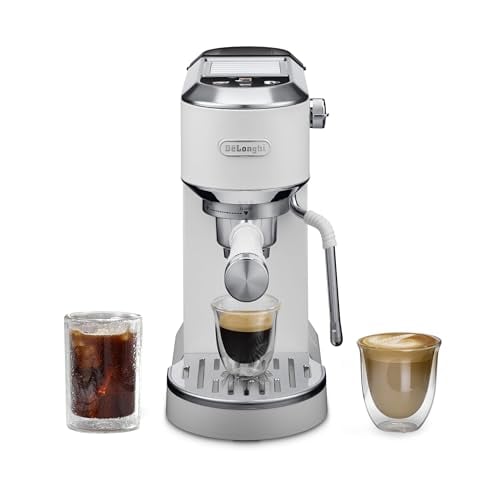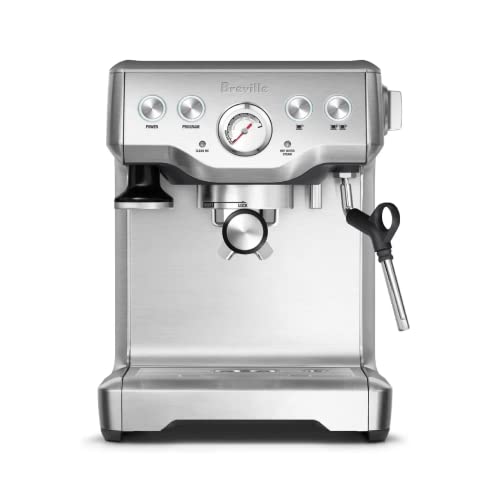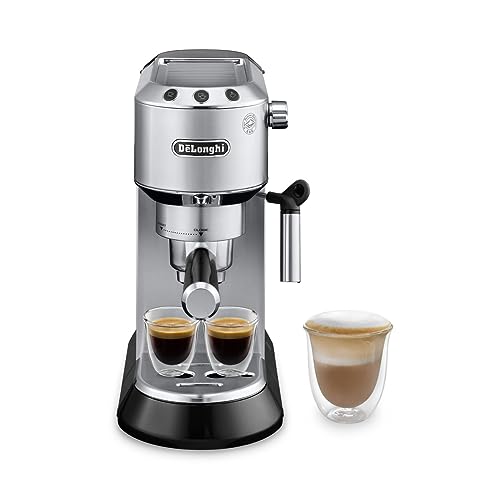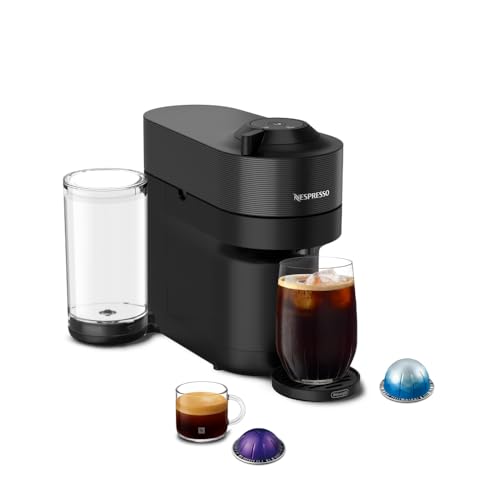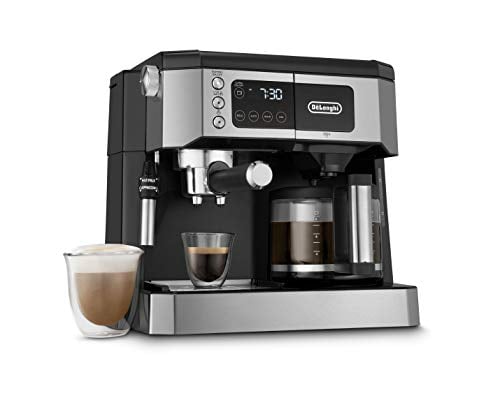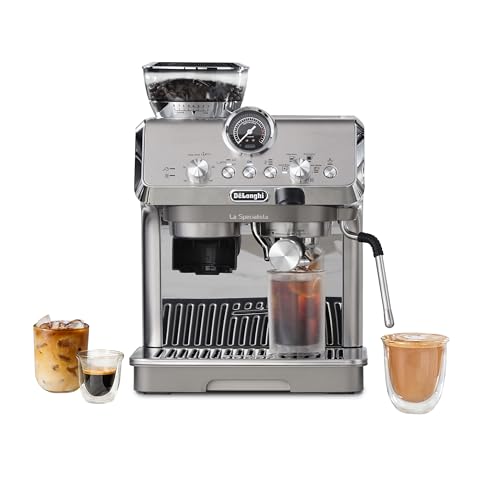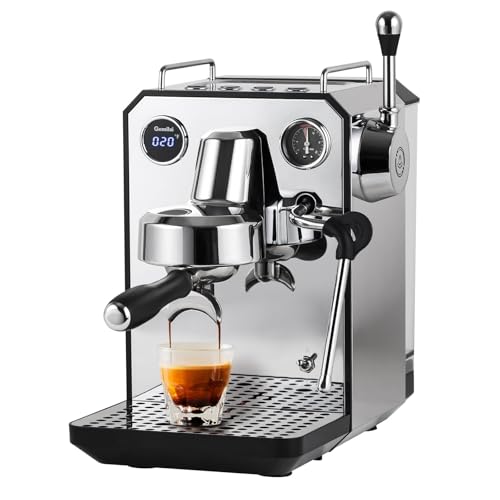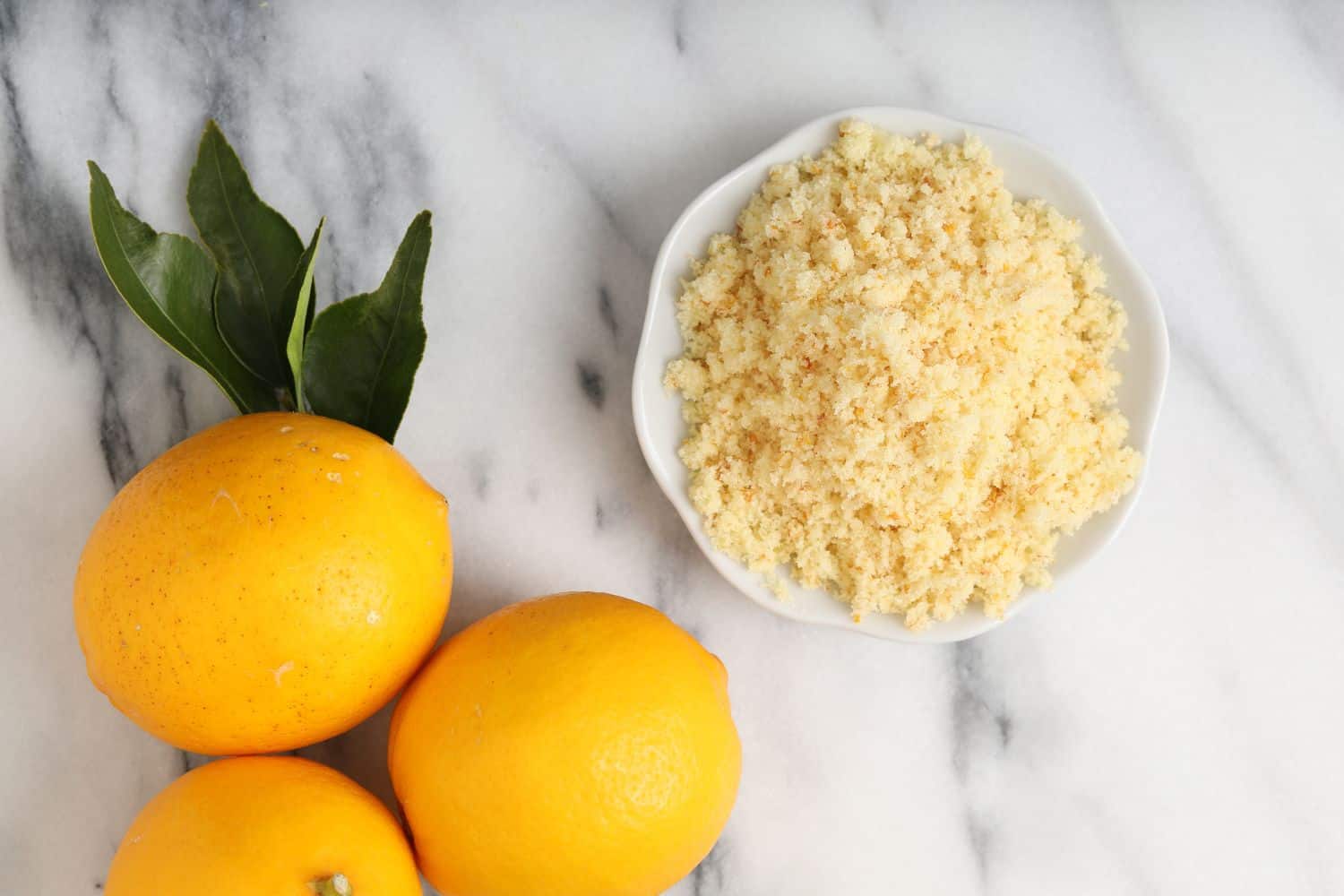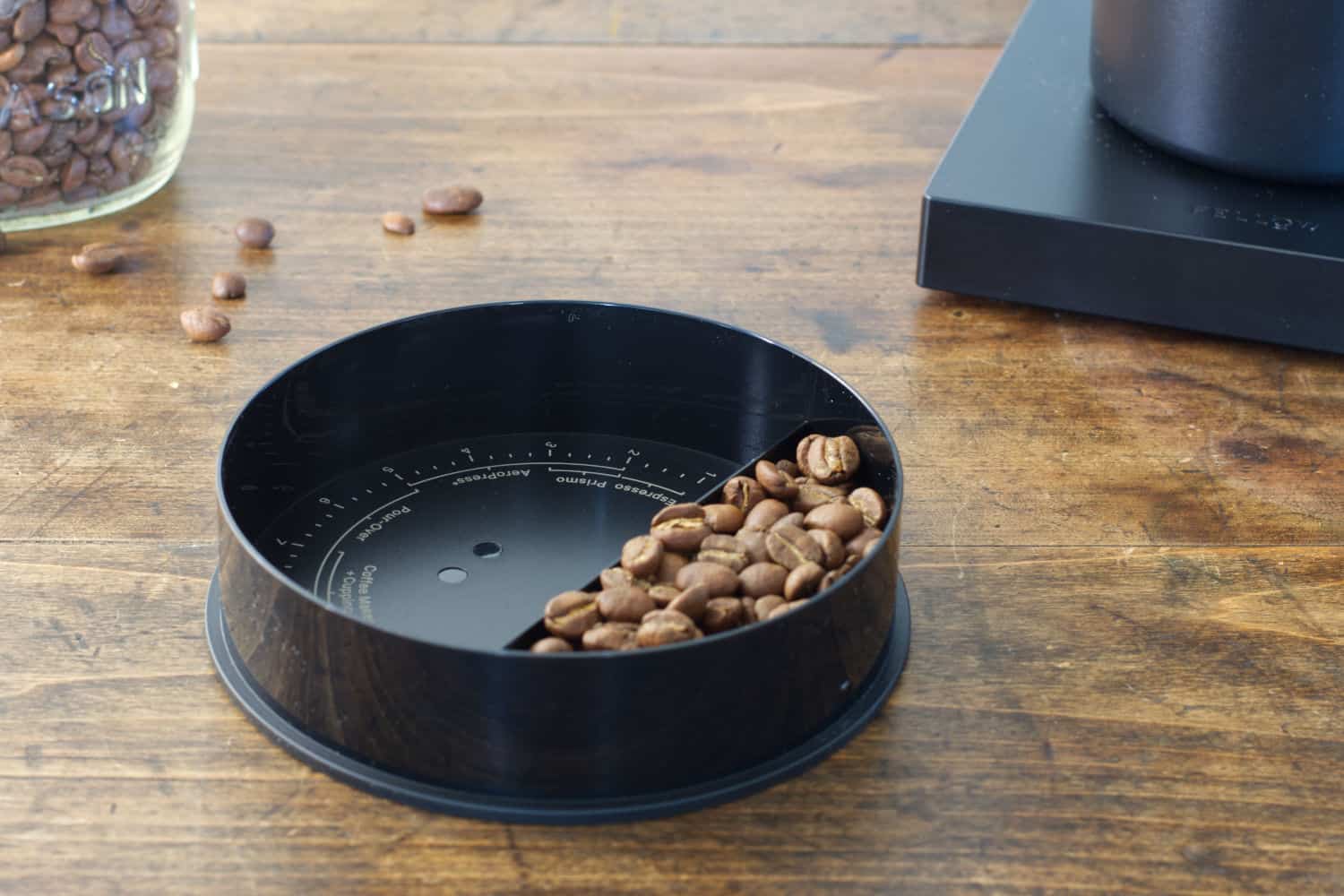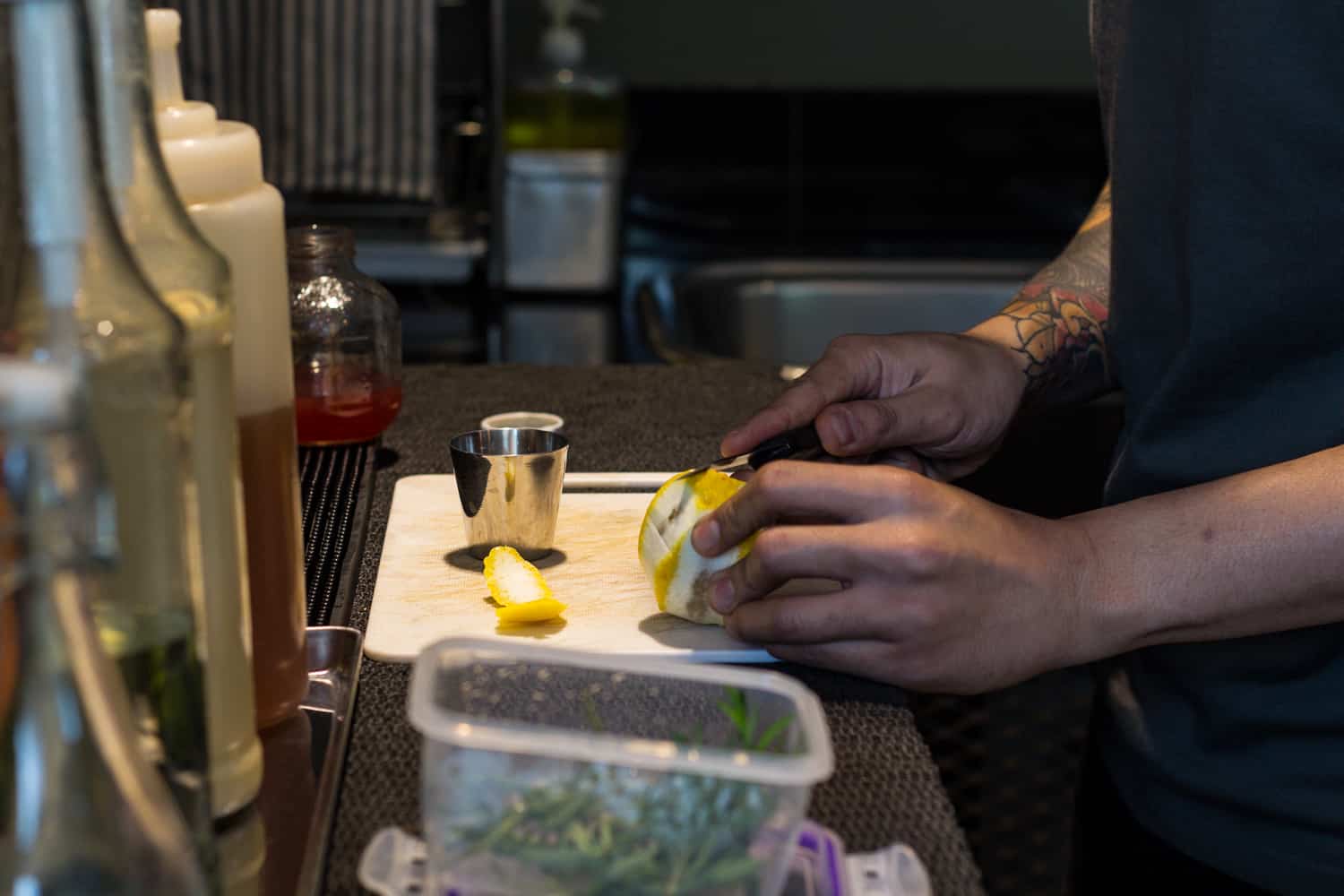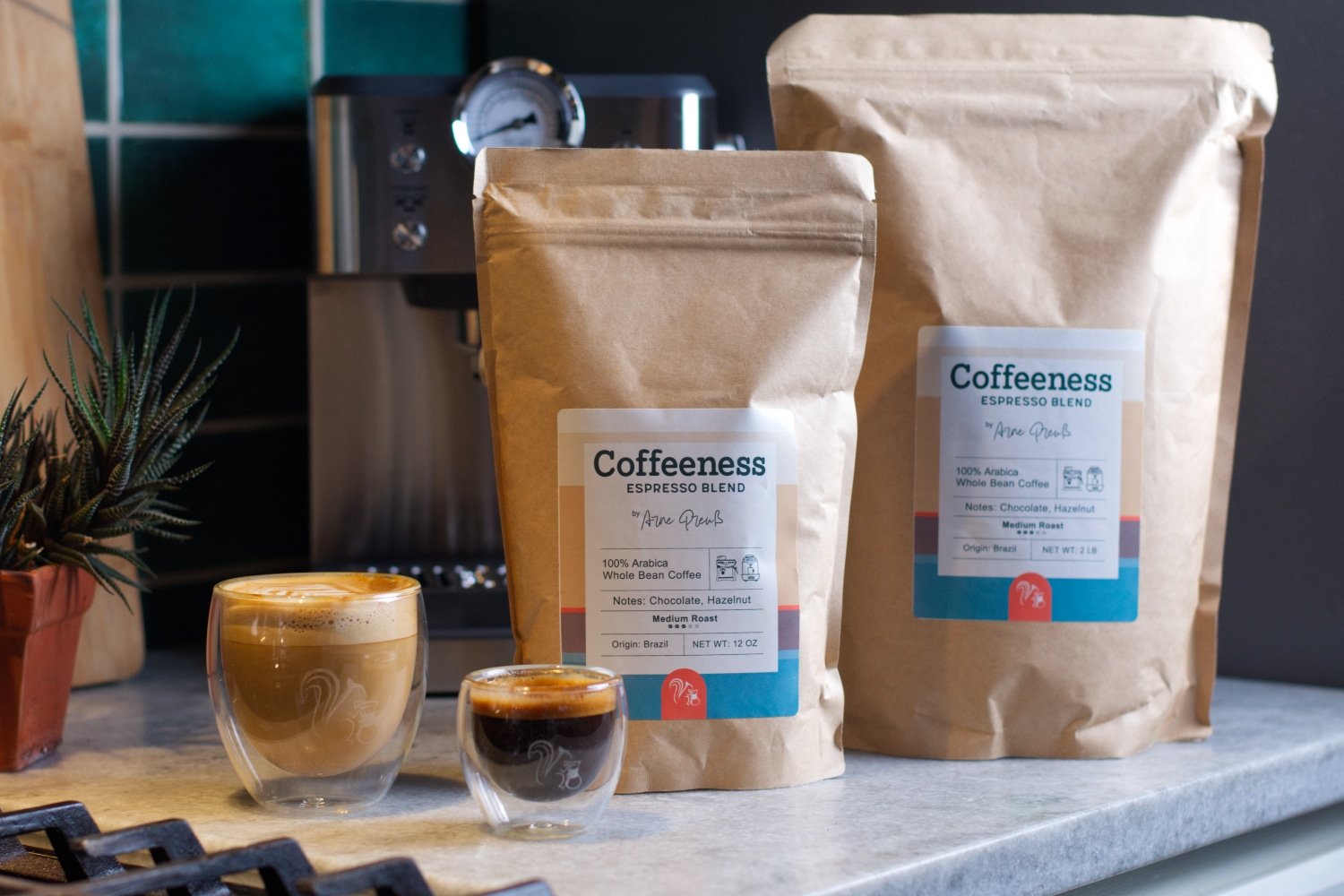Coffee goes surprisingly well with just about anything. Some ingredients, like chocolate in the marocchino and mocha, make for a match made in heaven, while others (ergo citrus in the espresso romano) might not make sense at first.
This Italian coffee is perhaps the most divisive in all of coffee culture. Purists firmly believe that citrus has no business in an espresso shot! However, a growing legion of coffee lovers swear that the bright flavors unlock rather than mask espresso’s complexity.
So, who’s right? Let’s dive deeper into the history, flavor and preparation of the contentious espresso romano!
Table of Contents
What Is an Espresso Romano?
An espresso romano is espresso with a slice of fresh lemon peel. The lemon peel, expressed over the coffee, imparts a zestiness into the drink.
The “romano” in the name suggests Roman origins, but more on this later. In the meantime, let’s break it down:
Core ingredients: Single or double shot of espresso.
The citrus element: Fresh lemon peel.
Serving method: Lemon essence rubbed on the cup’s rim and lemon oils expressed over the coffee.
What Is the Real Origin of the Espresso Romano?
From its (contested) origins in Giugliano, Campania, this lemon-adorned coffee started appearing in Roman cafes after the Second World War. You may also find it in southern Italy as caffe romano, caffe al limone or caffe canarino.
During reconstruction, Italy (and most of Europe, actually) grappled with inconsistent coffee quality. Furthermore, quality beans were expensive to import.
Lemon peel “corrected” the coffee by enhancing flavor and masking bitterness. A practical Italian solution, indeed, born from necessity!
Controversially, another theory puts this coffee’s origins squarely in the New World. It credits Italian-American cafes with adding it to their menus to suit American palates. Supporters of this theory argue that authentic Italian coffee culture would never bastardize pure espresso with citrus!
Unfortunately, historical evidence for both claims remains sparse. Italian coffee historians rarely mention the drink and American literature from the 1950s and 1960s refers to it only vaguely.
Perhaps these contested origins are in keeping with the Dr-Jekyll-and-Mr-Hyde nature of the espresso romano itself. It simply refuses to conform to simple categorization!
| Italian Origin | American Origin | |
|---|---|---|
| Location | Campania (southern Italy) and Rome | Italian-American cafes in New York and California |
| Time Period | Late 1800s – Early 1900s / Late 1940s – 1950s | Late 1940s – 1960s |
| Purported Reason | To cleanse the palate after strong espresso. The acidity in the lemon enhanced the coffee’s flavor and was an excellent digestive aid. | Italian immigrants adapted their coffee culture for American palates. The addition of lemon made intense espresso more approachable. |
Why Do Lemon and Coffee Actually Work Together?
Essentially, lemon’s bright acidity acts as a flavor catalyst. It cuts through any underlying bitterness in espresso, enhancing its flavor.
But how exactly does it do this? Concisely, in three ways.
First, the acidic contrast does more than add tartness. It allows for underlying flavor notes, such as berry, chocolate, caramel or fruit to come through.
Second, lemon peel contribute to the flavor complexity. Essential oils like citral and limonene release aromatic compounds that dance within the crema. The bright, zesty fragrance and subtle taste these volatile oils impart also complements espresso’s earthy flavors without being overwhelming.
Last but not least, the astringency in lemon acts as the perfect palate cleanser. It prevents bitter compounds from accumulating on your tongue between sips. As a result, each sip feels renewed rather than progressively heavier.
The Critical Role of Crema and Lemon Oils
I briefly touched on lemon oils and how they influence flavor in the espresso romano. What I didn’t touch on, is how crema works with these oils to enhance the flavor even more.
Crema consists of emulsified coffee oils, sugars, proteins and gases. In an espresso romano, it serves as the perfect aromatic trap.
Twisting lemon peel over crema releases microscopic citrus oil droplets that settle onto the foam structure. Simultaneously, coffee’s oils absorb these citrus oils.
This oil-to-oil fusion results in a simple but ingenious flavor delivery system. This aromatic top layer draws your palate in by releasing a zesty fragrance with each approach of the cup.
Crucially, the espresso romano demonstrates why technique matters in coffee. Simply adding lemon juice or a lemon wedge would catastrophically dismantle the foam structure in crema. It also eliminates the sustained release of lemon oils. As a result, you’d end up with a flat, rather acidic coffee that robs you of the aromatic and textural sensation that is the espresso romano.
Aromatic release: Lemon oils and terpenes expressed from the peel directly onto crema create an immediate burst of aroma-enhancing volatile compounds.
Crema as a carrier: Crema foam traps these volatile compounds within it. This enhances the coffee’s nose and acts as a flavor delivery system.
Flavor infusion: As you sip, the lemon-oil-infused crema is the first thing you smell and taste. It’s a bright counterpoint to the earthy espresso liquid below. This creates a layered flavor experience that cyclically evolves from citrus-heavy to coffee-forward.
Texture & mouth feel: Expressing the oils in the lemon peel rather than lemon juice preserves the crema’s texture. It maintains espresso’s characteristic body and mouthfeel (which lemon juice dissipates) and keeps aciditylow.
Classic Espresso Romano Recipe: A Step-by-Step Guide
This simple yet sophisticated beverage leverages quality ingredients to deliver a quintessentially Italian coffee experience.
Freshness is the name of the game here, so only fresh-pulled espresso shots and fresh whole lemon will do.
Ingredients:
18-20 grams of espresso beans
1 fresh, organic lemon (unwaxed)
Sugar (optional)
Equipment:
Espresso machine
Espresso grinder
Demitasse cups or glasses
Sharp pairing knife / vegetable peeler
Small spoon for stirring
Clean kitchen cloth
Select and Prepare Coffee Beans
Choose fresh-roasted espresso beans with chocolate, caramel or nut undertones to complement the citrus beautifully.
Using only the best espresso grinder, grind your coffee beans to a fine consistency.
Prepare the Lemon
Wash the lemon under cold water. Gently wipe dry with a kitchen cloth.
Using a sharp paring knife or vegetable peeler, cut a thin strip of lemon peel half an inch wide and 2-3 inches long.
Avoid cutting into the white pith underneath; it’ll make your drink bitter.
Brew Espresso
Now, pull a traditional espresso shot. Aim for a 1:2 coffee-to-water ratio (18-20 grams of coffee, yielding 36-40 milliliters of liquid in 25-30 seconds).
If you don’t have one of these home espresso machines, coffee from a moka pot will do. However, the flavor will be slightly different.
Express Lemon Oils
Next, place your lemon peel between your thumb and forefinger, with the exterior facing your coffee.
Then, gently twist the peel about 2-3 inches above the surface of the crema. You should see a tiny mist of oils hitting the surface. Rub the peel around the rim of the cup or espresso glass.
Now, gently drop the expressed peel into your coffee. Allow it to float to the surface.
Drink and Enjoy!
Serve immediately, while the lemon peel is still potent and the espresso hot.
If adding sugar, do so now. Gently stir, savor and sip your coffee. You’ll notice that lemon oils continue to release as you sip.
Pro Tips
Choose unwaxed, organic, unblemished lemons.
Twist, don’t squeeze the lemon peel to express a fine mist rather than large droplets that’ll overpower your coffee.
Timing is everything! So, express the lemon peel just before serving.
Choosing Your Coffee: Which Beans Work Best for Espresso Romano?
Coffeeness Medium Roast Espresso
Well-balanced with chocolate & hazelnut notes
Freshly roasted in Brooklyn
Very low acidity
The ideal espresso romano uses espresso beans that complement rather than compete with the brightness of the citrus. Medium to dark roasts provide an essential body for your espresso with their developed sugars and chocolate, nutty or caramel notes.
Brazilian coffee beans excel here. They have chocolatey, nutty undertones and a mild acidity that won’t clash with the citrus.
Colombian beans work well, too. They almost always guarantee a balanced flavor profile, with mellow hints of either caramel, fruit or chocolate.
Avoid overly-bright and acidic Kenyan or Ethiopian beans. Lemon would overwhelm their inherent fruity acidity. Besides, these coffees excel as light roasts, which lack the body to balance the espresso romano’s dual nature.
What Are Some Variations of the Espresso Romano?
Espresso romanos fall under that curious category of “corrected coffees.” These typically boast an espresso base with added ingredients that balance coffee’s bitterness.
Popular variations include alcoholic coffee drinks like the Italian caffecorretto (with grappa or sambuca) and the Spanish cafe carajillo (with Licor 43).
They also include crowd-pleasing creations like the espresso martini, espresso tonic and the lemony Portuguese mazagran. Unlike in the romano, however, the added ingredients in these coffees alter espresso’s taste significantly.
The beauty of the espresso romano is that it gives you room to experiment. Feel free to use Meyer lemons for a gentler aroma, lime peel for more astringency or orange peel to make a sweeter espresso all’Arancia. Oh, and if you can get them, Amalfi lemons add authentic Italian flair!
As you’ll see below, you can go even further. There’s nothing stopping you from icing your coffee up and making an iced espresso romano!
Iced Espresso Romano: The Perfect Summer Refresher
The iced version of espresso romano transforms this classic coffee into a refreshing beverage, perfect for spring-summer.
Ingredients:
18-20 grams, fresh-roasted espresso beans
1 fresh, unwaxed, organic lemon (washed)
1-2 tablespoons (15-30 ml) simple syrup
Ice cubes (made with filtered water)
Splash of cold water (30-60 ml) for dilution (optional)
Equipment:
Espresso machine and grinder
Cocktail shaker with inbuilt strainer, bar spoon and fine mesh strainer
Measuring cup or jigger
Sharp pairing kine or vegetable peeler
Short glass (for flash-brewing)
Tall glass for serving
Here’s how to make the perfect iced espresso romano:
Prepare your coffee beans and lemon as you would for a hot romano.
Pull your espresso shot directly over ice in a heat-resistant glass. This flash-chill method rapidly cools the coffee while preserving its flavor and crema.
Stir in the simple syrup and water if using.
Express the lemon peel directly over the surface of the iced coffee and drop into the glass.
Alternatively, use a cocktail shaker:
Add flash-chilled espresso, simple syrup, optional cold water and fresh ice cubes into a cocktail shaker.
Shake vigorously (as with an espresso martini recipe) for 10-15 seconds to reach the proper temperature and dilution.
Lift the shaker’s lid and express the lemon peel directly over the coffee.
Strain this mixture into an ice-filled serving glass and drop the expressed lemon peel into the coffee.
Serve immediately!
How Does the Espresso Romano Compare to Other Coffee Drinks?
The espresso romano occupies a unique niche in coffee’s diverse world. It’s set apart by its purely aromatic and flavor-focused twist.
In variations like machiatto, latte, cappuccino, affogato al caffe and con panna, proteins and sugars in the frothed milk, ice cream or cold cream fundamentally change coffee’s temperature and mouth feel. But in an espresso romano, the citrus doesn’t do this. It only serves to add an aromatic kick and subtle lemony taste.
| Drink | Addition | Purpose |
|---|---|---|
| Romano | Lemon peel | Citrus oil infusion enhances aroma and cleanses the palate. |
| Macchiato | Foamed milk | Milk foam moderates temperature and adds textural contrast. |
| Coretto | Liqueur | Grappa or sambuca adds flavor and a warming effect. |
| Con panna / affogato | Whipped cream / ice cream | Whipped cream / ice cream adds sweetness, richness and balance, resulting in a dessert-like coffee experience. |
Troubleshooting Your Espresso Romano: Common Mistakes and How to Fix Them
As with any coffee, when brewing a caffe romano, you’re bound to experience hiccups, the most common being bitterness, sourness or weak flavor.
Here are some scenarios:
Problem: My drink is overwhelmingly sour.
Solution: You’re likely getting pith or juice into the drink. Ensure you peel and use only the yellow part of the peel.
Problem: My drink is extra bitter.
Solution: The acidity in lemon peel amplifies flaws in your espresso extraction. Make sure your pulling game is on point with the right grind size, coffee-to-water ratio and optimal shot time (25-30 seconds).
Problem: I can hardly taste the lemon.
Solution: Your lemon may not be fresh. Alternatively, you may be expressing the lemon oils from the peel incorrectly. Always use super-fresh, unwaxed organic lemons and express the peel by twisting (not squeezing) directly over the crema.
Problem: My drink’s aroma disappears quickly.
Solution: Express the lemon peel just before serving. Aromatic oils in the peel are volatile and dissipate quickly, so timing matters. Serve your coffee immediately.
Espresso Romano Benefits: More Than Just a Caffeine Kick?
Despite viral social media claims, espresso romano offers no miraculous health benefits beyond those of its individual components.
The health benefits of coffee are well known – improved cognitive function and alertness, antioxidants and improved metabolic function to name a few. These come through in the espresso. Similarly, lemon provides vitamin C, which supports immunity and boosts collagen production.
So, simply combining espresso and lemon doesn’t provide any synergistic “superpower” effects. Indeed, no peer-reviewed research that I know of attributes extraordinary health benefits to this pairing.
The true benefit in drinking an espresso romano is quintessentially Italian – sensory pleasure. It makes the coffee more enjoyable, and hopefully, encourages you to sip and savor as the Italians do.
Are “Romano Beans” and Espresso Romano Related?
The short answer is, no. An espresso romano is a coffee drink. Romano beans, also known as Italian flat beans, are a vegetable. The “romano” is purely coincidental.
Espresso Romano FAQ
Although highly debated, espresso romanos likely originated in 19th century Italy, in Giugliano, Campania, and later, Rome.
Espresso romano isn’t really popular in Italy. This coffee is more popular in France and America. However, you’ll find it on coffee shop menus in Naples, Positano, Capri, the greater Amalfi Coast and southern Italy where lemons are abundant.
I recommend medium/medium-dark-roasted Brazilian or Colombian Arabica espresso beans. A classic 70:30 Italian Arabica-Robusta blend also works well.

